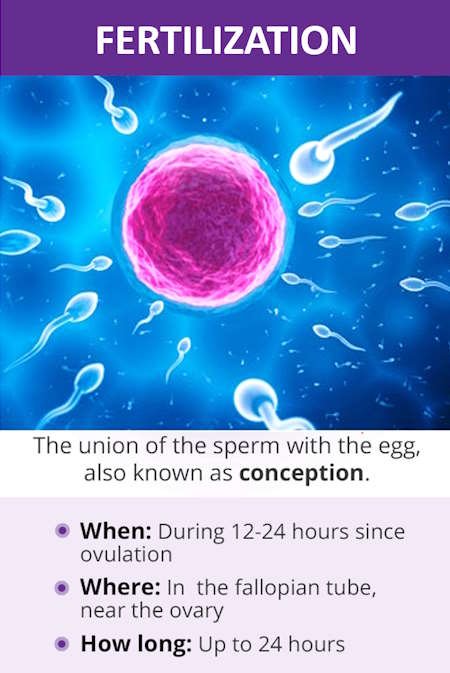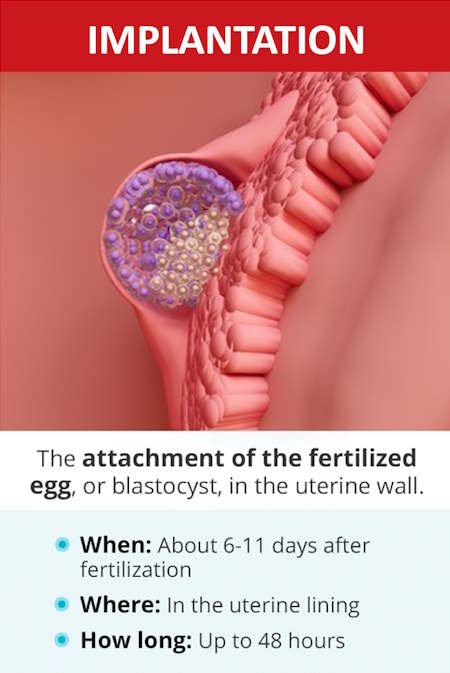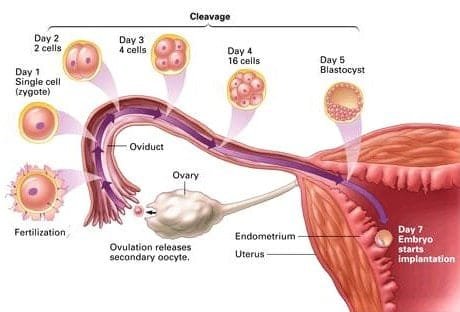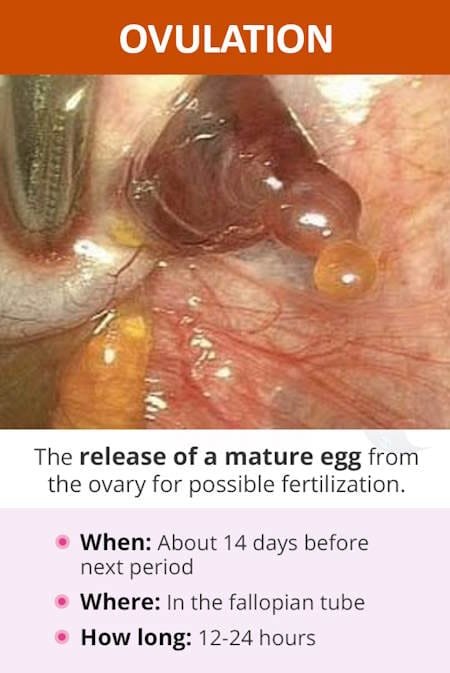How Do You Get Pregnant: From Ovulation and Conception to Implantation
1. Understanding Ovulation: The Starting Point
Ovulation is the process where a mature egg is released from the ovary, making it available for fertilization. This event is critical to the entire process of conception. Typically, ovulation occurs once a month in people with ovaries. The exact timing can vary from person to person, but it usually happens about 14 days before the start of the next menstrual period. During ovulation, hormonal changes prepare the body for the possibility of pregnancy.
Key points about ovulation:
- It usually occurs once a month
- Only one egg is typically released
- The released egg is viable for about 24 hours
- Hormonal changes during this time prepare the body for potential pregnancy
2. Preparing for Pregnancy: The Role of the Cervix and Vagina
The cervix and vagina play crucial roles in preparing the body for potential pregnancy. Let’s explore how these parts of the reproductive system contribute to the process.
The Cervix: A Gateway for Sperm
The cervix is the lower part of the uterus that connects to the vagina. It contains glands that produce cervical fluid, also known as cervical mucus. This fluid changes throughout the menstrual cycle and plays a vital role in conception.
Cervical fluid characteristics throughout the menstrual cycle:
- During and just after menstruation: Little to no noticeable cervical fluid
- Between menstruation and ovulation: Increasing amount of cervical fluid, becoming wetter, thicker, and cloudier
- Around ovulation: Cervical fluid resembles egg white – thin, slippery, and stretchy
The consistency of cervical fluid around ovulation is crucial because it provides an ideal environment for sperm to swim through. This “fertile” cervical fluid helps sperm survive longer and move more easily through the reproductive tract.
The Vagina: Preparing for Sperm
The vagina also undergoes changes to prepare for potential conception. Normally, the vagina maintains a slightly acidic environment to protect against infections. However, when exposed to semen during sexual intercourse, the vagina becomes less acidic. This change creates a more favorable environment for sperm survival and movement.
The time when cervical fluid is most conducive to sperm survival and the egg is released is known as the “fertile window.” This is typically the period when conception is most likely to occur.
3. The Uterus: Creating a Welcoming Environment
The uterus, often called the womb, plays a central role in pregnancy. It undergoes significant changes throughout the menstrual cycle to prepare for the possibility of supporting a growing embryo.
The Menstrual Cycle and Uterine Preparation
The uterine preparation for pregnancy occurs in several stages:
- Menstruation: The cycle begins with the shedding of the uterine lining (endometrium) from the previous cycle.
- Proliferative Phase: After menstruation, rising estrogen levels cause the endometrium to thicken. The uterine lining cells divide and increase in number.
- Secretory Phase: After ovulation, progesterone levels rise, further preparing the uterus for a potential pregnancy. During this phase:
- Endometrial cells stop dividing and start growing larger
- The number of blood vessels in the uterine lining increases
- Uterine contractions are suppressed
- The endometrium releases nutrient-filled sacs into the uterus to nourish a potential fertilized egg
These changes create an optimal environment for a fertilized egg to implant and begin developing into an embryo.
4. The Sperm’s Journey: A Race Against Time
When sperm enter the reproductive tract, either through sexual intercourse or artificial insemination, they face a challenging journey. Let’s follow their path and the obstacles they encounter.
From Vagina to Uterus
Contrary to popular belief, sperm don’t swim all the way to the fallopian tubes on their own. While they do use their tails to swim through the cervical mucus in the vagina and cervix, it’s actually the uterus that plays a significant role in moving sperm towards the fallopian tubes.
Here’s how it works:
- Sexual activity can trigger the release of oxytocin in the brain
- Oxytocin causes the innermost layer of the uterus to contract
- These contractions help push the sperm onwards
- The uterus also has tiny, finger-like structures called cilia that help guide the sperm
The Uterine Welcome: Not Always Friendly
Interestingly, when sperm enter the uterus, they trigger an immune response. The number of white blood cells in the uterus increases, and these cells begin to attack dying sperm. It’s possible that they may also attack healthy sperm, which is one reason why so few sperm make it to the fallopian tubes.
The Final Stretch: Reaching the Fallopian Tubes
Even after making it through the uterus, sperm face another challenge: finding the right fallopian tube. Remember, typically only one egg is released during ovulation, meaning only one of the two fallopian tubes will contain an egg. Some sperm inevitably end up in the wrong tube.
In fact, only a tiny fraction of the millions of sperm that entered the vagina actually make it to the correct fallopian tube. It’s a testament to the complexity of conception that even with millions of sperm, fertilization is not guaranteed.

5. The Magic of Fertilization
After the long journey through the female reproductive tract, the surviving sperm finally reach the vicinity of the egg in the fallopian tube. But the process of fertilization is far from over. Let’s explore the fascinating details of how sperm and egg finally unite.
Preparing for Fertilization
As sperm travel through the fallopian tubes, they undergo two important processes:
- Capacitation: The outer layer of the sperm is altered, preparing it for the final stages of fertilization.
- Hyperactivation: The movement of the sperm’s tail changes, giving it the final boost it needs to reach and penetrate the egg.
The Egg’s Role
The egg isn’t a passive participant in this process. It, along with its surrounding cells, produces chemicals that attract sperm. Some research even suggests that sperm may be drawn to the slightly warmer temperature at the ovarian end of the fallopian tube.
Breaking Through Barriers
To fertilize the egg, sperm must overcome two final obstacles:
- The cumulus oophorus: This is a group of cells surrounding the egg. Sperm use an enzyme to dissolve these cells and pass through.
- The egg’s outer membrane: Once past the cumulus oophorus, the sperm must then break through the egg’s outer membrane. It does this by fusing with the membrane and using another enzyme to digest through it.
Interestingly, once a single sperm has penetrated the egg, the egg’s membrane changes rapidly to prevent other sperm from entering. This helps ensure that the egg is fertilized by only one sperm.
The Moment of Fertilization
Once a sperm has made it through these final barriers, its nucleus (containing the genetic material) enters the egg cell. The nuclei from the egg and sperm then merge, combining their genetic material. This is the moment of fertilization, and the resulting cell is called a zygote.
The zygote now contains all the genetic material it needs to potentially develop into a human being – half from the egg and half from the sperm.

6. Implantation: The Final Step to Pregnancy
Fertilization is a crucial step, but it doesn’t guarantee a pregnancy. The fertilized egg still has a journey to make and an important task to accomplish: implantation.
The Journey to the Uterus
After fertilization, the zygote doesn’t stay still. It begins to divide into multiple cells as it’s pushed along the fallopian tube towards the uterus. This journey typically takes about 6-12 days.
During this time, the dividing cells form a few different structures. By the time it reaches the uterus, the fertilized egg has developed into a structure called a blastocyst.
Arrival in the Uterus
When the blastocyst arrives in the uterus, it’s ready for the final step: implantation. This is the process where the blastocyst attaches to the lining of the uterus.
Here’s how it happens:
- The uterus detects the presence of the blastocyst
- It releases enzymes that break down the outer membrane of the blastocyst
- Once this barrier is removed, the blastocyst can attach to the endometrium (the lining of the uterus)
This moment of attachment is when a pregnancy officially begins. The cells of the blastocyst will continue to divide and differentiate, eventually forming the embryo and the placenta.
7. The Timeline of Getting Pregnant: From Ovulation to Positive Test
It’s important to note that conception doesn’t always lead to pregnancy, and a person isn’t technically considered pregnant until implantation occurs. Additionally, pregnancy is only possible during your fertile window, which consists of about six days in each menstrual cycle.

Here’s a general timeline of how pregnancy occurs:
- Day 1: The first day of your menstrual period marks the beginning of your cycle.
- Ovulation day: You ovulate, releasing an egg from one of your ovaries. The timing of ovulation can vary significantly from person to person and even from cycle to cycle.
- Within 24 hours of ovulation: If you’ve had unprotected sex in the past few days, the egg can potentially be fertilized by sperm.
- About 8-10 days after ovulation: If fertilization has occurred, the fertilized egg (now a blastocyst) attaches itself to the wall of the uterus. This process is known as implantation and marks the official beginning of pregnancy.
- 5 to 7 days after implantation: At this point, you may get a positive result when taking a pregnancy test. This typically coincides with when your period would be due.
The Role of Pregnancy Tests
Even though pregnancy begins at implantation, it may take a few days before a pregnancy test can detect it. Here’s why:
- Pregnancy tests work by detecting a hormone called human chorionic gonadotropin (hCG) in your urine.
- hCG can be found in your blood about 11 days after conception.
- However, it can take longer for hCG levels to be high enough to detect in your urine.
- For this reason, it’s generally recommended to take a pregnancy test on the first day of your missed period for the most accurate results.
Understanding Your Fertile Window
Remember, it’s not possible to get pregnant every time you have sex. Conception can only occur during your fertile window, which includes:
- The day of ovulation
- The five days leading up to ovulation
This is because sperm can survive in the female reproductive tract for up to five days under ideal conditions, while an egg is only viable for about 24 hours after ovulation. You can use our advanced accurate ovulation calculator to know fertile window and ovulation dates.
8. Challenges in Conception
While we’ve described the ideal process of conception, it’s important to understand that things don’t always go according to plan. There are several challenges that can occur along the way.
Fertilization Doesn’t Always Lead to Pregnancy
Even when fertilization occurs, it doesn’t guarantee a pregnancy. In fact, it’s estimated that for every 10 fertilized eggs, only 4 to 6 will successfully implant in the uterus. The others may not make it to implantation for various reasons.
These very early losses are generally not considered miscarriages in a clinical sense, as most healthcare professionals define pregnancy as beginning at implantation. However, for people who are aware they’ve conceived (such as those using assisted reproductive technologies), these early losses can be emotionally significant.
Ectopic Pregnancy
Sometimes, a fertilized egg may implant somewhere other than the uterus, most commonly in the fallopian tube. This is called an ectopic pregnancy. Ectopic pregnancies are not viable and can be dangerous if left untreated. They’re considered a medical emergency and require immediate attention.
Fertility Challenges
Given the complexity of the conception process, it’s not surprising that many couples face challenges when trying to conceive. Factors that can affect fertility include:
- Age (Discover more in our article, “Effect of Advanced Age on Fertility and Pregnancy.“)
- Hormonal imbalances
- Structural issues in the reproductive organs
- Certain medical conditions. (Discover more in our article, “What is infertility? Causes, Symptoms and Treatment Options“)
- Lifestyle factors like stress, diet, and exercise
If you’ve been trying to conceive for a year without success (or six months if you’re over 35), it’s recommended to consult with a healthcare provider. They can help identify any potential issues and discuss possible treatments or interventions.
9. Conclusion: The Miracle of Life
The process of conception is intricate, complex, and frankly, quite miraculous. From the release of a single egg, to the journey of millions of sperm, to the precise timing and conditions needed for fertilization and implantation – so many factors must align perfectly for a new life to begin.
Remember, while we’ve described the typical process here, every body is unique. If you have concerns about your fertility or reproductive health, it’s always best to consult with a healthcare provider. They can provide personalized advice based on your individual situation.











